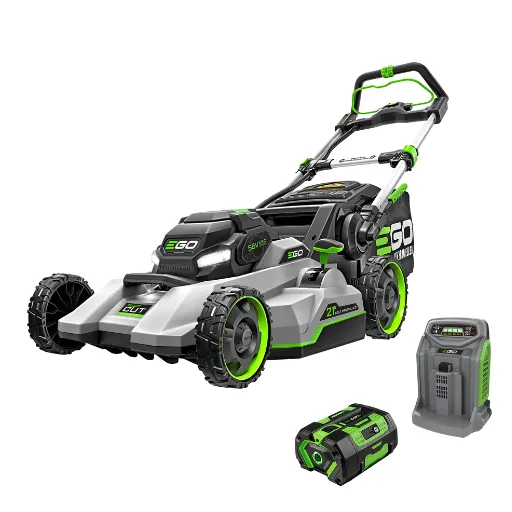With the advancement of lasers, marking and engraving have become much easier and more precise across a broad spectrum of materials. The most popular methods are often laser marking and laser engraving; these two techniques are often confused due to the similarities in their processes and results. Nevertheless, these techniques have major differences in scope, functional purpose, and level of interaction with the material. This article endeavors to break down the differences that are defined between laser marking and engraving and to describe their processes, benefits, and ideal targets in achieving them in various industries. Knowing these differences is imperative for companies and individuals so that they invest in the correct, laser-based solution for their needs.
What is the difference between laser marking and laser engraving?

The difference between laser marking and laser engraving is primarily in the depth in which materials interact and the functionalities at hand. Laser marking applies low-powered lasers to discolor the surface of a material without having to remove any of it. The mark is permanent and great for barcodes, logos, and serial numbers. It is a non-invasive method that preserves the structure of the material. Laser engraving, on the other hand, employs high powered laser to remove layers of the material and etches designs or text onto the surface. This highly suits deeper and tactile features requiring truncation and sturdiness for branding and part identification.
Which machines are used for marking with lasers?
To mark with a laser, a beam of light is focused onto the surface of an object with a high level of precision. Initially, a low-powered beam of a laser is directed towards the material’s surface, leading to precise discoloration, which, once achieved, is irreversible. In this manner, marking with a laser ensures the material is never altered, and there are sufficient reserves for discoloration to occur, adding higher durability. Along with modern technical advancements like a change in the material and the altercation needed to achieve the desired contrast, the power of the laser can be adjusted and moved between ten to one hundred W. Scanning precision can be set between 700 mm/s to over 2000 mm/s, along with varying the speed of the laser. The primary determining factor of the wave lenght section compatibility with different materials such as metals, plastics or ceramics, is set to around 1064 nm for fiber lasers. Other parameters that need to be altered are the pulse frequency and spot size to achieve high standards for marking and ensure clarity of the achieved results.
What are the steps for laser engraving?
In laser engraving, the material is removed from the surface in order to carve or engrave a design, text, or pattern. To accomplish this, the workpiece is subjected to a focused laser beam with a high power level. The surface layer of the workpiece is vaporized or melted as it is focused onto the piece. Parameters like laser power, on average from 20W to 200W, the number of laser passes, and the purpose of engraving define the depth of crafting. The wavelength of the laser is of essence, with 1064 nm being optimal for metals and some plastics, while 10.6 µm from CO2 lasers is ideal for wood, glass, and organic materials. Additional technical parameters include Scanning speed which is most often adjustable between 500 mm/s to 1500 mm/s, Fraction of time 20 percent to 80 percent, and spot size which is tailored for accurate results. Pulse frequency, however, ranges from 20 kHz to 100 kHz and is altered to affect material removal rates and heat dissipation, ensuring a balance between depth and surface finish. The interplay of these parameters guarantees excellent durability on high quality permanent markings.
Which method creates a deeper mark: laser marking or laser engraving?
Between the two, laser engraving creates a deeper mark than laser marking does. This is because laser engraving removes material by completely vaporizing or melting the surface, which allows for significant depth. In contrast, laser marking modifies the surface texture of the mark without much material being removed, resulting in a mark that is relatively shallow.
When should you choose laser marking over laser engraving?

You ought to go for laser marking instead of laser engraving when all that is needed is surface alteration and material removal is out of the picture. Laser marking is appropriate for works requiring high accuracy, clarity, and precision with the least damage to a materials structural integrity. It is particularly suited for high-speed production where contrast and clarity are essential, such as for QR codes, barcodes, logos, or serial numbers on medical devices, electronics, and even automobile parts. Additionally, medical equipment and other electronics are better off with laser marking as it allows for a scratch-free engraving that will withstand heat or stress without losing functionality.
What are the best materials for laser marking?
Materials that are appropriate for laser marking are metals like aluminum, stainless steel, and titanium due to their high durability and scratch resistance. Plastics like ABS polycarbonate and acrylic are also some of the best options as they are responsive to laser marking. Ceramic and glass materials are widely used indomains that require marking materials permanently and accurately. At the same time, purpose-built coatings can improve marking performance on other surfaces that are difficult to mark.
Which industries stand to gain from laser marking the most?
- Aerospace Industry: The aerospace sector implements laser marking to identify parts, ensure their traceability, and ensure compliance with rigorous industry standards. Turbine blades, engine components, and cockpit instruments are marked with alphanumeric codes, barcodes, and industry-standard identifiers for tracking and quality assurance.
- Medical and Pharmaceutical Industry: Laser marking is crucial for use on surgical instruments, implants, and other medical devices that require serial numbers, lot numbers, and unique device identifiers (UDI). The marking must be created at a stage where it can withstand cleaning and sterilization cycles as mandated by medical industry standards.
- Automotive Industry: Automotive manufacturers deploy laser marking to mark and brand many parts, including engine components, safety devices, and even electronic circuits. The ability to feature permanent marks helps greatly in tracing parts, counterfeiting, and inventory control in a highly regulated environment.
- Consumer Electronics: The electronics industry relies on laser marking processes for designing and labeling circuit boards, microchips, connectors, and casings. The marking is performed with utmost precision and accuracy to ensure component integrity.
- Jewelry and Luxury Goods: Accessories like watches and jewelry over a certain price range always have their logos, designs, and serial numbers laser-etched. Doing this ensures the quality and uniqueness of the products.
- Industrial Manufacturing: Identifying crucial tools within an industrial environment is necessary for quality control and productivity. Laser marking on industrial equipment, machined parts, and even metal tools makes them easily identifiable in harsh working conditions.
- Food and Beverage Packaging: In the food and drinks sector, laser marking is widely used on products and their packaging to mask ingredients, batch numbers, expiration dates, and even QR codes. It is a contactless process that promotes environmental conservation and works at high speeds.
- Defense and Security: In defense, laser marking is an indispensable resource for making equipment, firearms, and ID tags secure. Mark precision and permanence guarantee adherence to military compliance standards and better asset control.
- Textile and Fashion Industry: Laser marking can be used to brand, add design, and customize fabric, leather, and other materials, guaranteeing product and material quality.
How do laser-marked products stand the test of time?
The marking process performed by laser marking machines is highly nuanced. Because the machine uses a laser, the interaction between the material’s surface and the laser’s depth and precision guarantees quality. The mark is created through a physical engraving which is fundamentally resistant to wearing out. These engravings also resist environmental factors like heat, water, and various chemical substances. Moreover, laser marking provides engravings with robust protection from fading and wearing out. Therefore, they can be used on long-term durability and traceability materials.
What are the advantages of laser engraving compared to laser marking?

Laser marking and engraving are both efficient approaches, however, they possess unique benefits as per the application. The laser engraving process entails removing material in a physically abrasive manner to achieve a deep and tactile mark. Consequently, it is suitable for situations where the mark must be extremely detailed and maintained under severe wear and tear conditions. The mark’s placement makes it visible in corrosive or abrasive surroundings. In contrast, laser marking changes the surface structure without stripping the material away, making it much faster and more appropriate for fragile or thin materials. It is especially beneficial for processes that need sharp, clear marks in great detail on the materials without altering it.
What are the suitable materials for laser engraving?
It is easy to see why laser engraving is so versatile. It can be used on a huge variety of materials. Laser engraving works exceptionally on metals like stainless steel, aluminum, and brass. Lasers also work on non-metals like wood, glass, ceramics, acrylic, and leather, as they all enable the creation of crisp, detailed engravings. Also, some specially formulated plastics can be engraved. Even the efficiency of the engraving itself is greatly affected by the density, reflectivity, and thermal conductivity of the material.
What products commonly use laser engraving?
- Industrial Equipment: Parts and tools often need to be marked for inventory or tracking purposes, and laser engraving makes that easy. Laser marking is widely used because it is more durable than conventional printing and can withstand harsher environments.
- Jewelry: Laser engraving on rings, necklaces, and bracelets allows for the addition of intricate details like names and patterns without ruining the delicate piece of jewelry.
- Electronics and Gadgets: Branding on smartphones, tablets, and laptops is prominently done using a laser, demonstration using QR codes, serial numbers, and specific designs is commonplace. The quality guarantees clear markings even on small components.
- Promotional Items: Companies will use laser engraving for basic products such as pens, keychains, mugs, and USB drives. This targets advertising as it is as professional as it is cheap.
- Awards and Recognition: Trophies, plaques, and medals are named, engraved with achievements, and given permanent intricate designs to celebrate the recipients.
- Medical Devices: Implants, tools, and equipment are engraved with specific identification codes, ensuring they follow regulations and are traceable.
- Automotive Parts: Similar to implants, engine parts, gears, or even chassis components, engraving allows for marking and tracking these parts, ensuring smooth quality control and inventory management.
- Fashion Accessories: Pulses and handbags can have a person’s Name engraved on them, which helps distinguish them as special or presents.
- Signage and Identification Tags: Engraving for nameplates, labels, and signs ensures they stay intact and legible for reading outdoors or in industries.
- Art and Home Decor: Engraving is a form of art that requires an artist to develop an explicit design for a piece. This can be done on wood, glass, or even ceramics. In addition, other decor items like coasters, picture frames, or wall pieces have distinct shapes and messages.
What is the impact of engraving depth in a product?
The engraving depth can significantly change how the finished product looks and works. For the more robust functions, having deeper engravings offers a different level of durability and legibility. Regarding engravings, marking for usage in harsh regions also alters the structural strength of thinner materials. Shallow engravings give the product a better finish and serve delicate, ornamental objectives. The depth of engraving should be in collaboration with several matters: the outlook of the product, properties of the material, and the level of detail needed. In taking these matters under consideration, the most desirable results can be achieved.
How does laser etching fit into the laser marking vs laser engraving comparison?

Laser etching lies in between laser marking and laser engraving, making it more intricate compared to both in terms of the material’s depth and interaction. Unlike engraving which etches deeper into the material, etching melts the surface which leaves the surface with a slightly raised or a textured effect. Etching is usually a speedier and less intrusive process, meaning it can be used on coated surfaces or for marking metals, ceramics, or polymers. It may not be as strong as engraving but it still provides very detailed designs and logos on surfaces with easer impact on the structure of the material compared to marking.
What is the laser etching process?
The process starts with heating an object’s surface with a high-frequency laser beam, which ensures it melts and expands. This creates a raised mark alongside the materials and provides a contrasting beautiful effect. The process has a lower operating depth than engraving, which makes it faster, unlike other methods used for high-precision etching on non-organic matter like metal, ceramics, and plastics. For applications where detail and quick speed are essential values, laser etching is the best option to choose.
What are the differences between laser etching, marking and engraving?
The processes of laser etching, marking, and engraving are different mainly due to differences in depth, impact on material, and purpose of application. In other words, laser marking refers to creating a permanent mark on the surface of a material using laser equipment. This process is primarily used to engrave barcodes and serial numbers on the surface of a material. The marks are smooth, permanent, and non-intrusive.
Laser marking takes a more advanced approach than laser etching since it utilizes lower power settings, which allow for discoloration of the material. This works explicitly without removing any material from the surface and is widely used when dealing with softer materials such as plastics or coated metals. It is commonly used with barcodes and serial numbers since it covers various applications while producing accurate results. Laser etching is also useful when speed is a primary concern.
Laser engraving creates deeper cuts (with depths between 0.02″ – 0.125″ or greater),by vaporization, depending on the power setting and the hardness of the material. It is performed slower to yield more effective results for challenging markings that require heavy-duty applications. Each method is selected based on speed, endurance, and material compliance requirements. Key technical parameters include the material’s reflectivity, laser power, speed, and wavelength. Troubles can emerge from such parameters when there is too much power for softer materials when engraving. It can also be tough for etchings which benefit from low power and high speed settings.
Which cases favor laser etching the most?
When marking requires speed and only surface-level material is to be tampered with, laser etching is the solution. Barcodes, serial numbers, and detailed designs are easily etched on metals, plastics, or ceramics and ready for immediate use in the electronics or medical device industries. The method is also useful in cost-efficient products, as less energy is needed to process them.
What types of laser machines are used for marking and engraving?

Application-specific laser machines, including fiber lasers, CO2 lasers, and UV lasers, offer varying capabilities of engraving and marking. Fiber lasers, CO2 lasers, and UV lasers serve different applications by integrating distinct techniques of laser technology. Fiber lasers are preferred for metals and industrial-grade plactics due to their precision and versatility. In contrast, because of the higher engraving speeds, CO2 lasers excel in engraving and marking various organic materials like wood, acrylic, glass, and even leather. Based on further advanced technology, UV lasers thrive in applications involving fine marking of sensitive materials like polymers, glass, and medical tools since they possess short wavelengths and heat-affected zones are minimized. Every equipment type turns out to be beneficial in its way tailored to specific material properties and outcomes.
What is a fiber laser and when is it used?
Active gain medium is unique for fiber lasers, whose optical fiber is doped with neodymium, ytterbium or erbium. In contrast to other lasers, fiber lasers utilize diode lasers to generate light, typically through optical pumping. Additionally, light is delivered through a flexible optical fiber cable. Fiber lasers are preferred in pharmaceuticals for their unparalleled energy stability, high efficiency, and outstanding beam quality. Because of their unmatched precision, fiber lasers are praised for electricity, metal and many other industries. Additionally, their low need for maintenance further adds to their praise.
Applications that involve metal marking, deep engraving, cutting, and welding primarily utilize fiber lasers. Fiber lasers work efficiently with metals such as steel, aluminum, copper, and high-grade plastics. This is because their wavelength, often around 1,064 nm, enables focused energy delivery to the target material whilst ensuring minimal scattering. In addition, fiber lasers can achieve high peak power, making them effective for micro-marking and other applications that require extreme detail.
Fiber lasers have many important technical parameters. The most fundamental are operational power ranges (typically between 20W to 2000W for most industrial applications), pulse frequency (which can range from continuous wave to kilohertz levels for pulsed operations), and beam quality (for precise work, this is measured with the M² factor and is close to 1.0). Just like other fiber laser parameters, these values can be set and optimized to achieve specific application requirements which increases efficiency and versatility across different industries.
In what aspects do laser engraving machines differ from laser marking machines?
The difference between laser engraver machines and laser marker machines lies mainly on the depth and degree of the marks made, as well as their intended purpose and techniques, procedures and applications. In laser engraving, material is removed to create deep and permanent marks, or engravings. This is done by high-powered laser beams melting or vaporizing the surface material, usually working at a high power (20W – 2,000W) and producing greater than 0.1 mm. This method of creating inscribed serial numbers, logos, and engravings onto metal, wood, or plastic is ideal for applications where the end product will be put under duress.
On the other hand, laser marking uses a lower power level, less than 20W, which is much better for sensitive materials. Unlike material engraving, no material is removed; instead, the surface of the material is altered by allowing oxidation, discoloration, or altering the makeup on a molecular level. Examples of this method are annealing and color marking. This method is legible, precise, and non-destructive, which makes it ideal for branding, barcodes, or labeling sensitive components.
The process differences can be traced back to steam beam intensity, a prominent distinguishing technical feature. While marking systems pulse at a specific frequency and use low thermal stress to achieve a high contrast without damaging the material, laser engraving is done at a lower power density with tighter focus to remove materials from the surface. Then, engraving enable the user to use swift pulse durations to allow deeper penetration to the materials as marking focuses on surface tweaks with carefully controlled heat. These differences enable both machines satisfy particular industry demands with great accuracy and dependability.
What features should you look for in a versatile laser machine?
Enhancing the functionality and flexibility of a versatile laser machine is a key characteristic that should be prioritized. Ensure that advanced precision control is included to handle different materials and applications with the right cuts or marks. Look out for compatibility with a myriad of software systems in order to enhance workflow. Pay attention to the machine’s power and wavelength range, these parameters directly affect its ability to process different materials. Reliability and durability go without asking, and strong construction ensures consistent performance under intensive use. Finally, robust construction and user interfaces and customized settings lead to enhanced operational productivity and are effortless to use for industrial purposes.
How do you choose between laser marking, engraving, and etching for your project?

The selection of laser marking, engraving, or etching will depend on the requirements of the project and the type of depth that needs to be done as well as the material that needs to be used. For instance, laser marking is best suited to metals, plastics, and ceramics. It does not remove layers but rather discolors the surface, making it ideal for durable and precise labels. On the other end of the spectrum, Etching creates slow surface marks by physically changing the material. This is best suited for cheap and fast processes. Engraving is good for decorative designs as well as industrial pieces due to its ability to remove material and create deeper, more permanent marks onto the surface of the item. Remember the application and the level of strength, detail, and appearance that is needed, which should help your decision-making process.
What factors should you consider when selecting a laser process?
As you devise a laser process, fundamental factors to consider are the form of the material, desired post-processing, and the level of detail in the application. Remember the material characteristics such as reflectivity, hardness, and thermal conductivity because they will certainly affect the laser process’s efficacy and quality. Besides those, when calculating the cost factor depth and contrast of the markings, the production speed and the mannered accuracy should also be considered. The environmental and safety factors should not be overlooked as they all need to align with industry standards to guarantee reliability and uniformity of results.
Which method is best for creating raised marks?
The most effective way of laser engraving with marks that are raised is easily done with a method called annealing. This method uses heat to oxidize the material’s surface, resulting in a smooth mark, raised and durable without the necessity of removing any material. This technique is particularly good with metals such as stainless steel and titanium, as it produces highly legible and corrosion-resistant marks. It is a non-contact technique that is very precise because it causes negligible effect to the substrate, making it ideal for high enduring and high contrast applications.
How does the composition of the material affect what type of laser technique to use?
Material properties influence, to a great extent, which laser technique would be best suited for a particular application. Thermal conductivity, optical absorption rest coefficient, melting point, and reflectivity are critical factors that dictate a material’s interaction with laser energy. For example, materials that have high optical absorption at a laser’s wavelength are perfect for cutting and welding because they can absorb laser energy and convert it to heat. On the other hand, reflective materials like some metals will need shorter wavelengths or higher power lasers to minimize reflection losses.
Thermal conductivity dictates how much heat gets dissipated; materials with lower thermal conductivity concentrate heat, facilitating precise laser processing. The melting point has an impact on energy input demands; materials that have higher melting points require higher power-dense lasers. In the same way, all fiber or CO2 kilowatt-level power laser systems are ideal for metal machining, while delicate materials while delicate structures should be processed with minimum thermal damage using femtosecond lasers.
Selecting the appropriate method means coordinating the laser wavelength, power, pulse duration, and parameters with the material’s characteristics to achieve optimum results. An example is the use of lasers for micromachining, where ultra-short pulses (usually in the femtosecond range) are used to remove material while minimizing the thermal changes around the material.
Reference sources
Frequently Asked Questions (FAQs)
Q: What is the main difference between laser etching and laser engraving?
A: The main difference between laser etching and laser engraving lies in the depth of material removal. Laser etching is a subset of laser engraving that creates shallow marks on the surface, typically less than 0.001 inches deep. Laser engraving, on the other hand, involves removing material to create deeper marks, usually greater than 0.001 inches. Both are laser marking technologies, but they differ in the amount of material removed and the resulting depth of the mark.
Q: How does the laser engraving process work?
A: The laser engraving process works by using a high-powered laser to vaporize material from the surface of an object. The laser heats the material to its vaporization point, creating a cavity that results in a permanent, deep mark. This process can be used on various materials, including metals, plastics, and wood. The depth and quality of the engraving depend on factors such as laser power, speed, and the material being engraved.
Q: What are the advantages of using a laser marker for etching and engraving?
A: Using a laser marker for etching and engraving offers several advantages. These include high precision, repeatability, and speed compared to traditional engraving methods. Laser marking technologies also allow for non-contact marking, reducing wear on tools and minimizing material waste. Additionally, laser markers can create complex designs and are suitable for a wide range of materials, making them versatile for various marking applications and industries.
Q: What industries use laser etching and engraving?
A: Laser etching and engraving are widely used across numerous industries. Some key sectors include automotive (for part identification), electronics (for component marking), medical devices (for traceability), aerospace (for part serialization), jewelry (for personalization), and industrial manufacturing (for product identification and branding). These marking technologies are also popular in the signage industry and for creating promotional products.
Q: What is the difference between laser engraving vs laser marking?
A: While both are laser-based marking technologies, laser engraving and laser marking differ in their approach and results. Laser engraving removes material to create deep, permanent marks. Laser marking, on the other hand, is a broader term that encompasses various techniques, including laser etching, annealing, and foaming. Laser marking can alter the surface of a material without necessarily removing it, such as through color changes or surface modifications. The choice between laser engraving and other laser marking methods depends on the specific application and material requirements.
Q: When would you need laser etching instead of deep laser engraving?
A: You would need laser etching instead of deep laser engraving when you require a more subtle or superficial mark on the material. Laser etching is preferable for delicate materials or when maintaining the structural integrity of the part is crucial. It’s also ideal for creating high-contrast marks on metal surfaces, barcodes, or QR codes. Laser etching is often used in electronics, medical devices, and aerospace industries where minimal material removal is desired while still achieving a permanent marking solution.
Q: How does laser coloration differ from laser etching and engraving?
A: Laser coloration, also known as laser annealing or laser color marking, is a different process compared to laser etching and engraving. Instead of removing material, laser coloration uses heat from the laser to create a color change on the surface of metals. This process alters the oxide layer on the material’s surface, resulting in different colors depending on the heat applied. Unlike laser etching and engraving, which create depressions or cavities, laser coloration produces a mark without changing the surface topography, making it ideal for applications where maintaining the material’s surface finish is crucial.
Q: What factors should be considered when choosing between laser etching vs engraving for a project?
A: When choosing between laser etching and engraving for a project, several factors should be considered: 1. Material type and thickness 2. Desired depth and visibility of the mark 3. Surface finish requirements 4. Durability needs of the marking 5. Production speed requirements 6. Complexity of the design 7. Regulatory compliance (e.g., for medical or aerospace applications) 8. Cost considerations The specific requirements of the project and the characteristics of the material being marked will help determine whether laser etching or engraving is the more appropriate marking technology.









